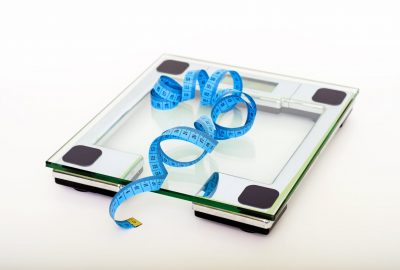Despite having enormous potential to disrupt the remote health industry, one of the main reasons remote physiotherapy has not reached its potential is the lack of patient adherence. Engagement from the patient and adherence to the prescribed therapy exercises is pivotal to the success of any form of physical therapy, be it in clinic or remotely delivered home exercise protocols. Sadly, the constant need for motivation and relevant feedback for the physiotherapy patient and the lack of intelligent technologies that can plug this gap has so far proven to be the bottleneck. Today, patients receive exercises to do at home either using a PDF or viewing a passive video without the ability to track their movements and their progress at home, with no idea if they are doing it properly. The prescribing practitioner also has no idea whether the patient has actually gone through the protocol and can’t, therefore, assess their progress. Most patients, therefore, stop exercising and lose trust in the recovery process.
What is motion tracking technology for physio therapy?
Motion Tracking Technology like Kemtai which turns any device with a camera into a digital therapist can prove to be the game changer for remote physiotherapy. The technology allows patients and therapists or clinics to track the patients’ adherence and progress and receive feedback efficiently. This may greatly improve the treatment process and make it affordable, accessible, and engaging for both therapist and patient.
Real time motion tracking 24/7
Motion tracking technology enhances remote physiotherapy to a level where patients feel like they have access to a physiotherapist 24/7. A patient will be able to get immediate adaptive and corrective feedback on their exercises, at home, which might help them improve their recovery and might prevent any further injury. This may also help patients prevent additional injuries from potentially harmful movement mistakes.
By using motion tracking technology, patients might reduce their recovery time and could get back to their normal lives faster. This is especially helpful for those who have a job or other obligations that require them to be physically active on a daily basis. Motion tracking technology gives feedback on how well a patient is doing during their workout session. This may make the exercise more effective than it would be without this kind of help.
Motion tracking technology improves adherence rate
Patients may be more likely to adhere to their exercise plan, which can minimize treatment time and improve outcomes. They’re may also be more engaged in their own treatment because they can see their progress and effectiveness of the therapy on-screen during each session, without needing someone else there for feedback or motivation.
Also, there is no need to worry about scheduling sessions during office hours, as the patient can choose when they want to do the session. This means that they have more flexibility in their schedule. Patients might be more likely to attend sessions if they could choose when they want to do them. With motion tracking, the technology might eliminate the need for a trip to a clinic or hospital. By tracking their progress, the patient may see if their physical therapist is doing the right thing. If they feel that the fit is not right, they may easily switch things up and find someone who can help them achieve their goals faster.
Patient adherence to home exercise protocols might also increase since their actual performance is tracked and can be shared with their service providers helping generate more mutual accountability.
Leveraging analysis of human motion
Computer vision analysis generates usage and performance data that healthcare providers could leverage to personalize patient engagement. The healthcare industry is in a constant state of transition, with new technologies emerging all the time. The amount of data produced from each patient interaction is growing exponentially, and it’s often impossible for medical professionals to keep up with the sheer volume of information they have access to.
However, when healthcare providers leverage computer vision analysis as part of their patient engagement strategy, they could potentially make better use of this data and gain valuable insights into how patients interact with their treatment plans. This could give them a leg up over competitors who are still relying on traditional methods.
Healthcare providers are applying computer vision technology to gather more information on how patients interact with their environments, which has the potential to improve the quality of patient care. The ability to identify patients and understand their success or difficulty in certain exercises may help clinicians improve their care plans, as well as improve patient satisfaction. The technology enables them to interact with their patients and adapt their exercise routines, in real-time according to their performance.
Creating effective treatments using motion tracking technology
By using motion tracking technology such as Kemtai’s motion tracking platform, therapists can potentially make informed decisions about the patient’s treatment plan. They could recommend exercises to patients at home and have them do them in front of their cameras. This means that in-clinic appointments might be shorter as most evaluation has already happened during the exercise session, saving time for both patient and therapist.
Using technology platforms like Kemtai’s Motion Tracking, patients could benefit from not having to invest in and maintain any heavy or specialized equipment. They have more control over their time and privacy— they can use their own smartphones and perform the exercises at home alone when it’s convenient for them, instead of having someone else dictate the schedule.
For therapists, this technology could be a game changer. Motion tracking could give the therapist a more detailed view of each patient’s progress over time allowing them to better plan future treatment sessions as well as adjust if necessary in real-time or between visits. This computer vision technology may be used to track patient progress, provide feedback and guidance, help patients adhere to their home exercise program, and stay motivated and engaged in their own treatment.
Kemtai: The ease of watching a video with real-time feedback
Kemtai offers sensorless computer vision-based technology that turns any device with a camera into a personal physical therapist. Eliminating the need to wear sensors by employing superior AI technology, Kemtai analyzes 111 points on the patient’s body (much more than any company that uses sensors). The technology is scalable and not bound to the number of sensors the company has, making it an out-of-the-box solution for enhanced patient engagement.



